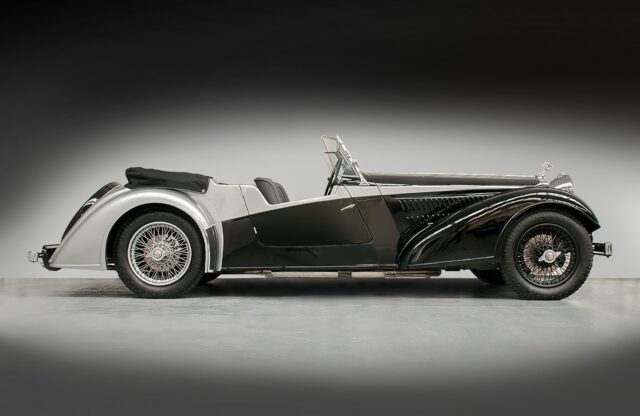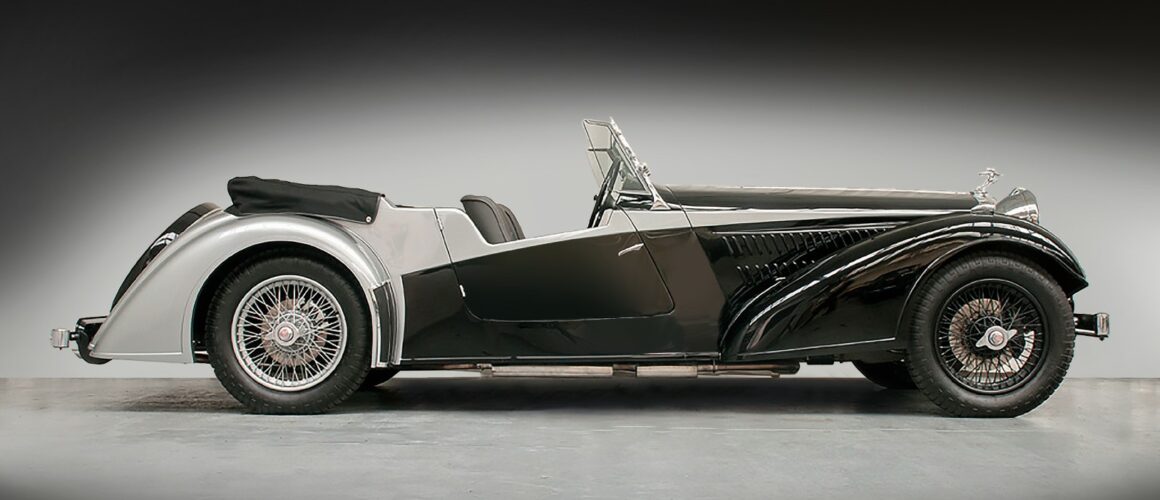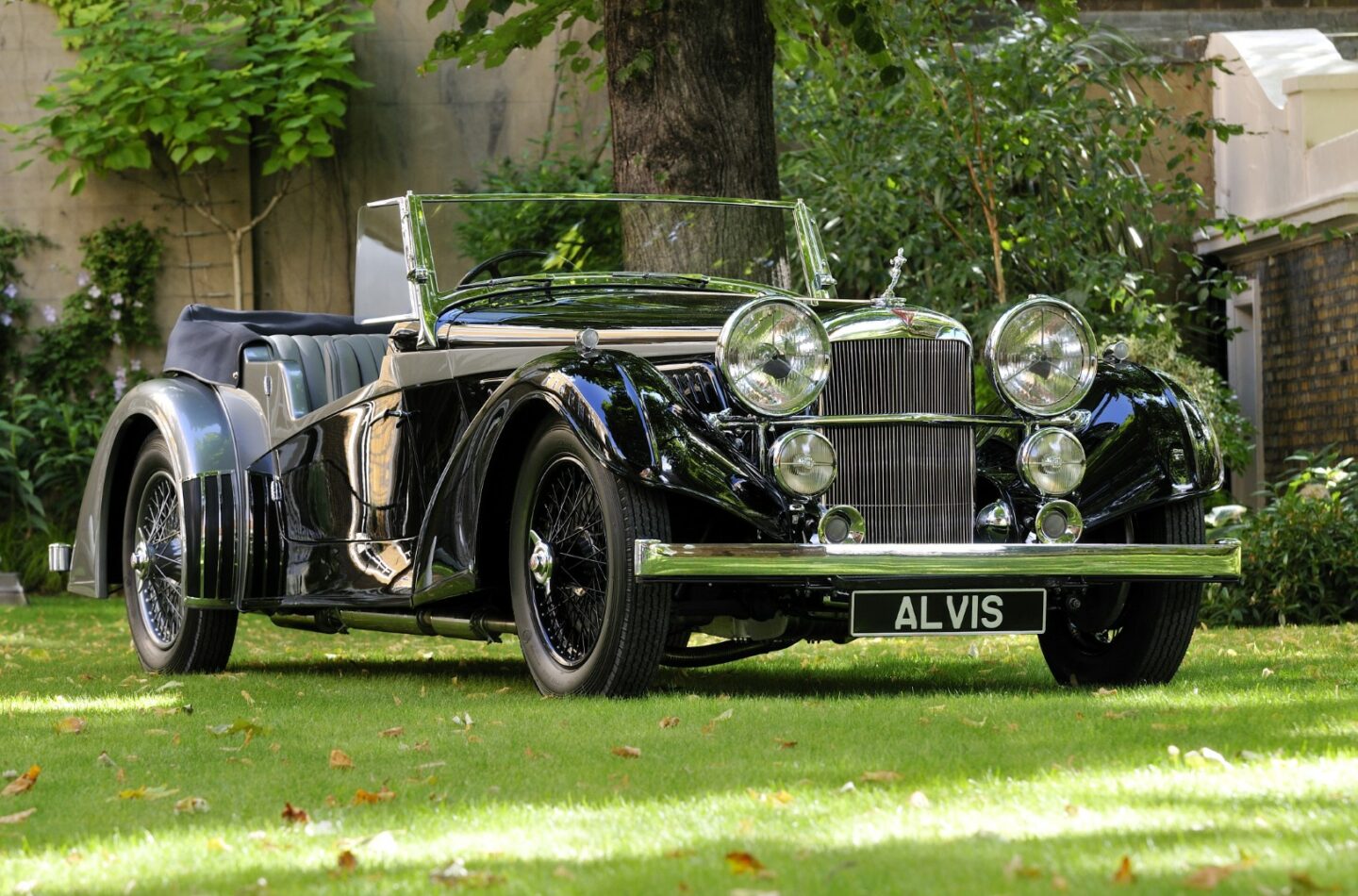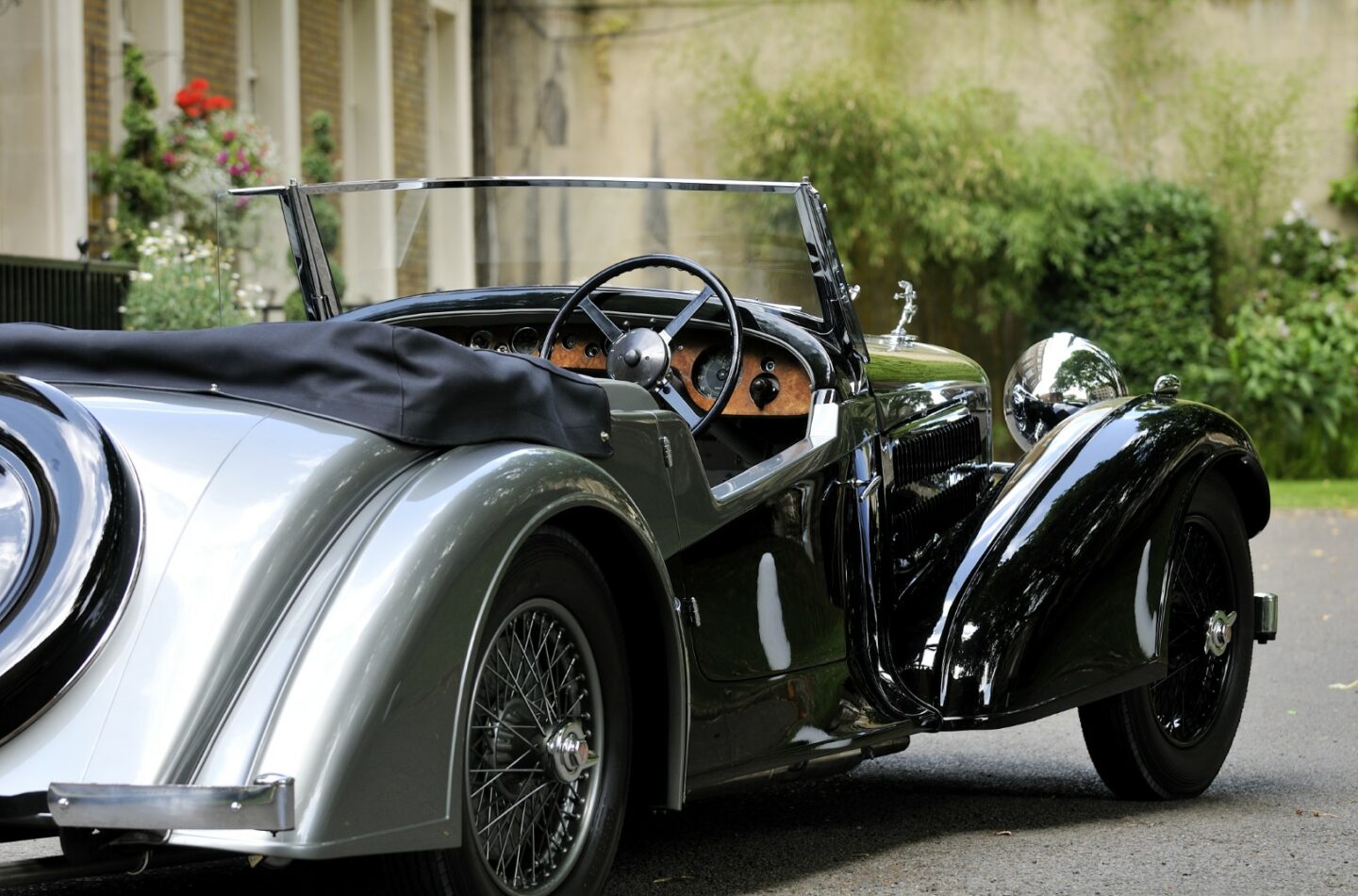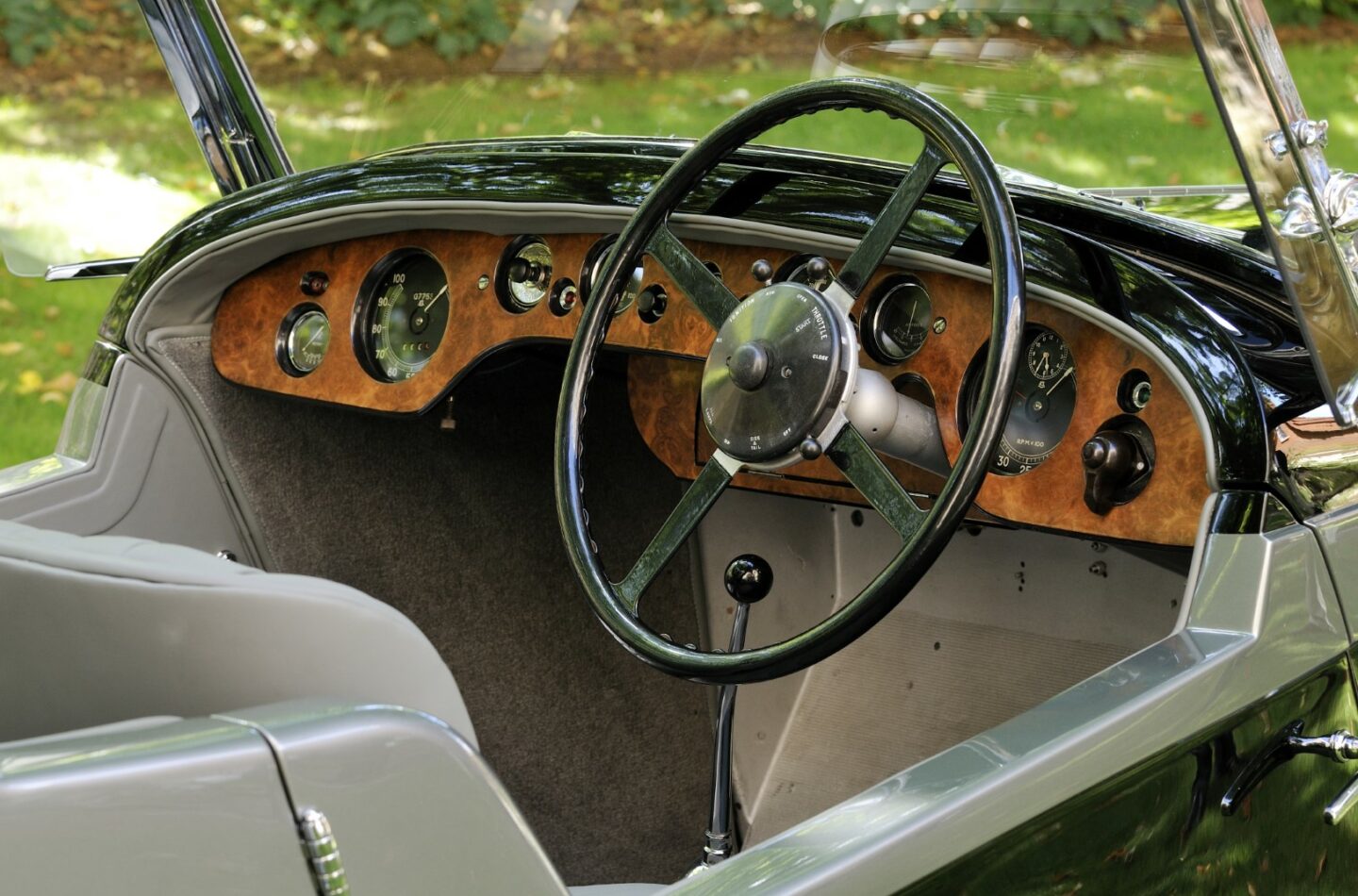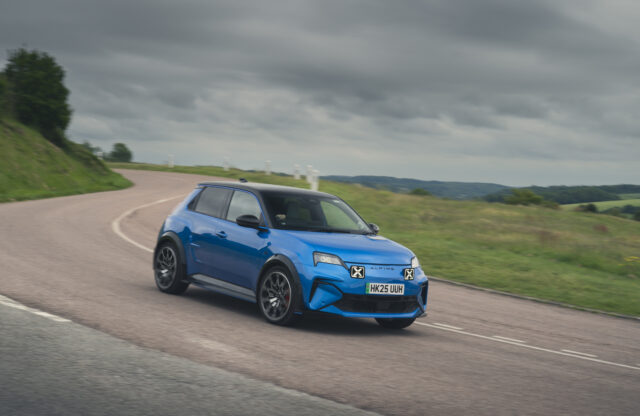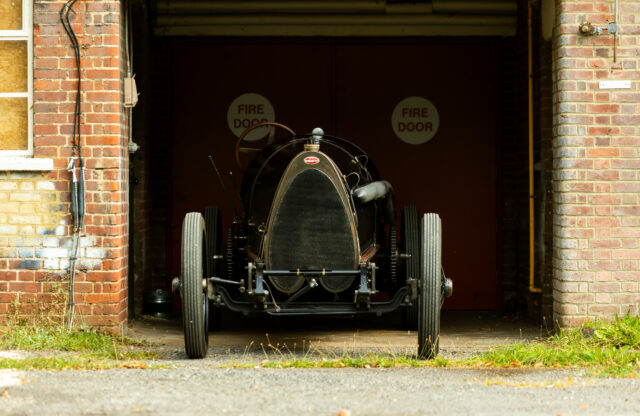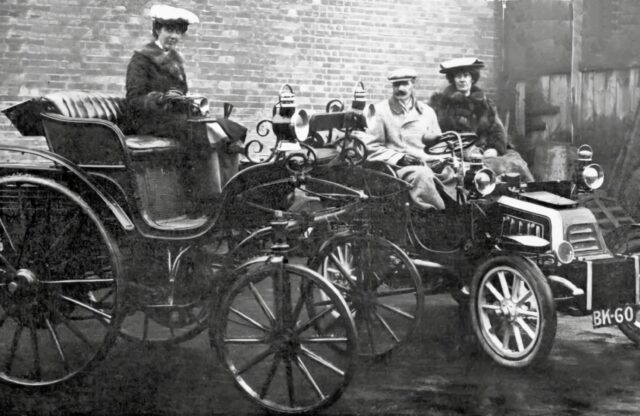“For me, it’s been a bit like working with a living museum,” says ‘Tony’ as he strolls through the collection of 20 or so classic models in the showroom, while he waits to see his new Alvis under construction in the workshop.
This is his fifth visit to the company’s Kenilworth, UK home in the past two years, and today he’s hoping to finalise the paint and trim colours for his Graber Cabriolet.
The Graber is one of five Alvis Continuation models that can be built to order from the stock of 400,000 parts and 50,000 engineering drawings, which Alvis Car Company owner Alan Stote also received when he bought the Alvis trademark and the Red Triangle spares business that supported the firm.
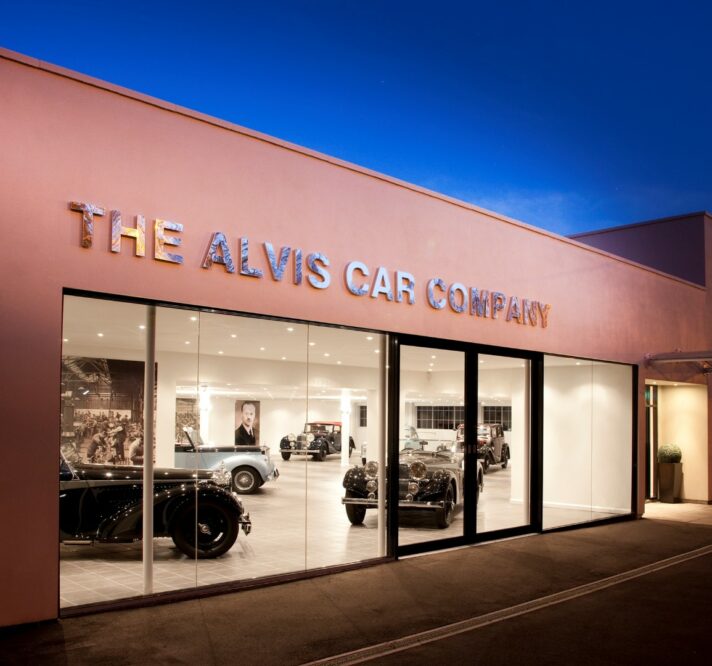
If it wasn’t for the modern plastic number plates, you’d never know this glorious four-seater open tourer wasn’t made in the 1930s
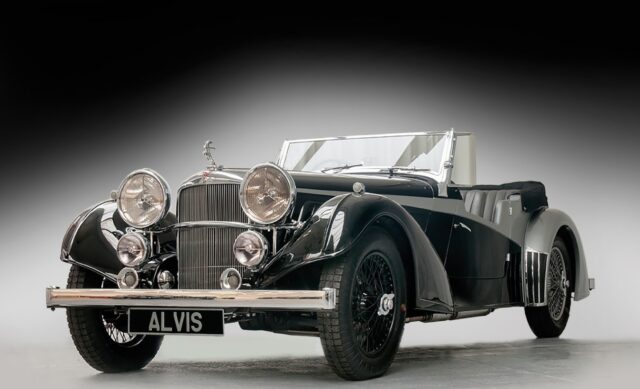
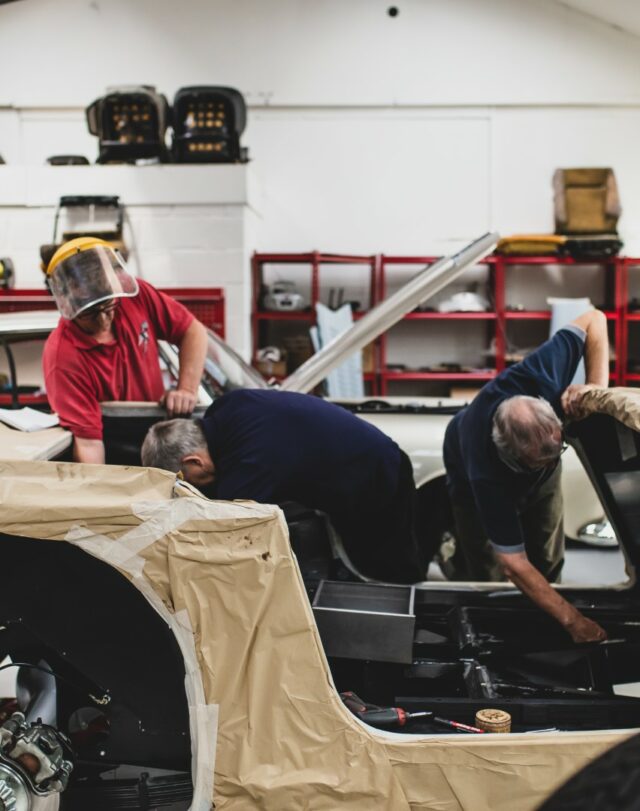
Stote was an Alvis owner before he became the Alvis owner, and he was wowed by the quality of the cars produced by the British brand from the 1920s to 1968.
“The very first one I had, I did such a lot with,” he recalls fondly. “We went on all sorts of international rallies, and it never ever let me down. I did so many rallies in this car, and I only realised how good it was when we went on mixed rallies and everybody was repairing their cars at the end of the day. I used to have to go and fiddle with mine, just to make sure it looked as if I was interested. But it never let me down.”
Stote become the ultimate Alvis aficionado, accumulating a significant collection, before taking ownership of the company in 1994. Most of the cars in the showroom are sold on consignment for customers, with each going through the workshop to ensure it’s roadworthy.
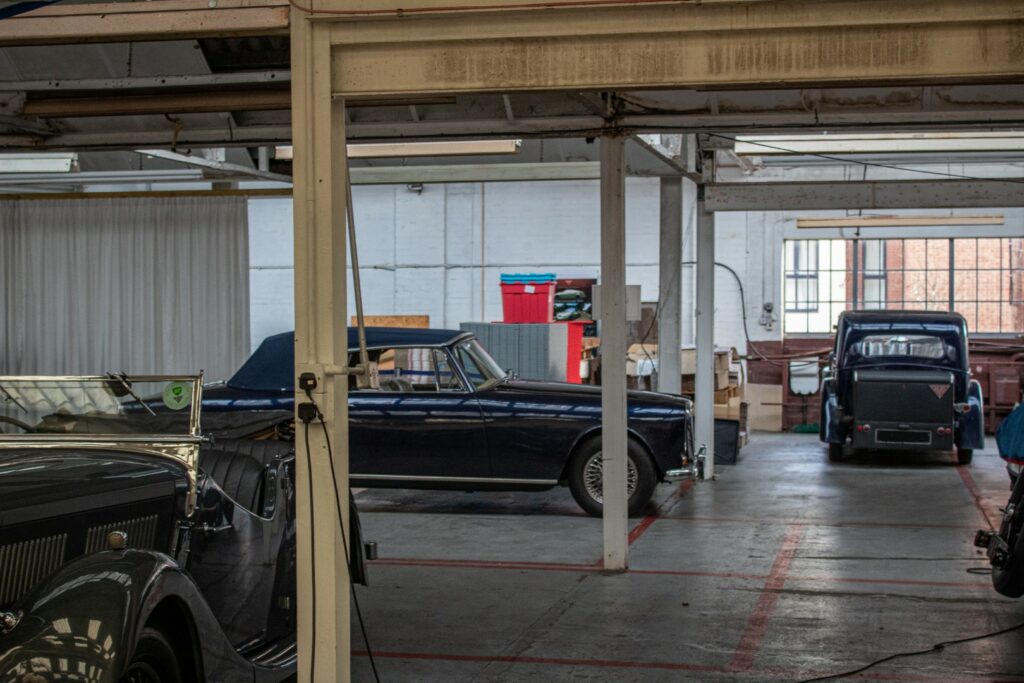
That same workshop is where Alvis also builds its Continuation cars. “Because I’d acquired the trademark, it just seemed a natural extension of that,” explains Stote. “We quadrupled the business since 1994, in terms of restoration parts, and it seemed the next logical stage was a Continuation model. It’s a Continuation, not recreation. We just picked up where Alvis left off in 1968. It’s been a quite a long time between orders, but we use the same drawings, we use the same everything.”
The first model to be continued was the Vanden Plas Tourer, priced at around £325,000 and limited to 25 examples. On display alongside its aged relations, if it wasn’t for the modern plastic number plates, you’d never know this glorious four-seater open tourer wasn’t made in the 1930s.
Look closer, and you might note that behind the centre-lock wire wheels are Brembo disc brakes, and that the numbers one to six are printed on the gearknob, instead of one to four. Inside, you’ll find seatbelts, and if you open the bonnet there’s the very same 4.3-litre straight-six that powered Alvis for decades, albeit now fitted with electronic ignition and fuel injection. The only other significant mechanical change is to use a rack-and-pinion set-up in lieu of a steering box.
The steel chassis is the same, and the aluminium bodywork, draped over an ash frame, is just as it was thanks to a combination of original drawings and the use of modern 3D scanning to recreate the bucks.
There’s a little of the Mega-Morgan about it at first, but when it comes to the driving experience the Alvis retains much more of its classic feel than today’s Malvern motors.
Where modern Morgans use BMW powertrains and bonded-aluminium chassis, have power steering, anti-lock brakes and traction control, this Vanden Plas is old school in almost every way.
Almost, that is. In order to comply with modern regulations, there’s an incongruous bleep and flashing LED light when you use the indicators, while the six-speed Tremec transmission offers a precise, positive shift experience. Those Brembo brakes provide excellent feel and a rapid retardation that are a far cry from the cable-operated stoppers found on original cars.

This makes the Vanden Plas Tourer remarkably easy to drive without losing its character. Only the steering’s lack of self-centring and the car’s massive turning circle take some getting used to. Initially it’s tempting to over-correct after a bend or approach at an inappropriate angle, but with relaxed hands and a little more forethought it soon becomes second nature.
Meanwhile, there’s the glorious grunt and splendid sounds of the lazy straight-six to enjoy. It will rev to 4,500rpm, but it seems very happy with little more than a couple of thousand on the clock. It’s a good job there’s no need to pay close attention to the engine speed, as the rev counter is mounted in the veneer dash directly ahead of the passenger. The speedometer is also pretty hard to read, as it is tucked away low and obscured by the giant four-spoke steering wheel.
No matter, though, as you’ll assess your speed through your senses. The rush of wind, the rising revs and accompanying farts of exhaust and the hedgerows whipping by. A 0-60mph time of under ten seconds is believable, and on winding A- and B-roads you won’t be holding up traffic.
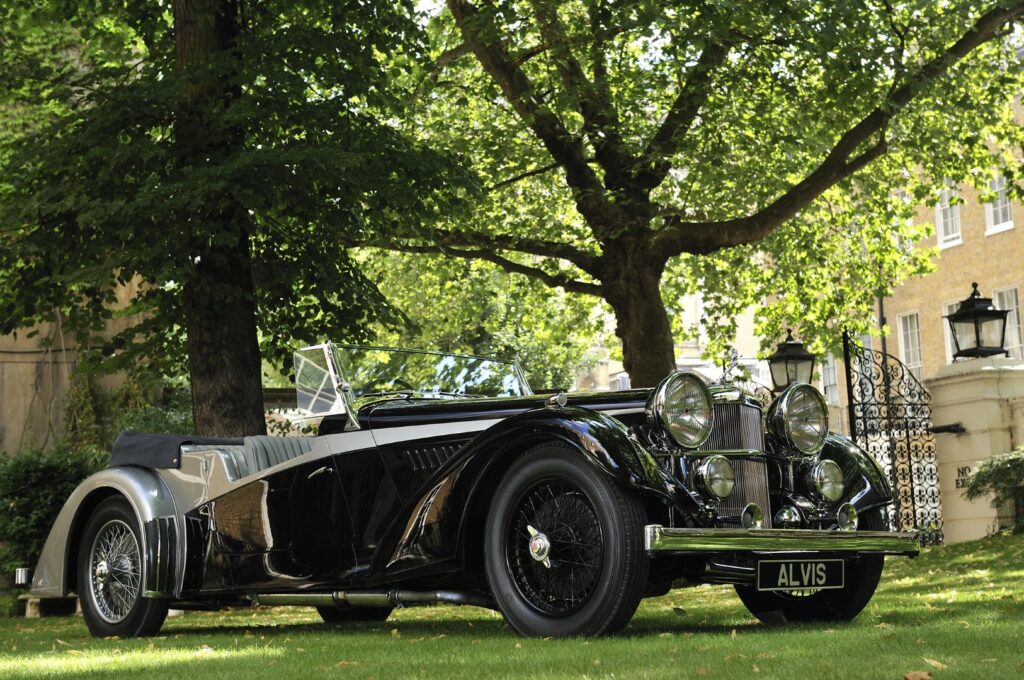
The Vanden Plas is long but narrow, and being just able to see the nearside wing through the plate-glass windscreen helps to position the car on the road and set it up early for sweeping turns.
Although this Tourer will sit at 70mph or more on the motorway, that’s definitely not the way to enjoy it. The low-sided ‘suicide’ doors and lack of side screens leave you feeling pretty exposed, and the prospect of mixing it with trucks and tearaways in altered Audis isn’t very appealing. Instead, it’s a car to seek out the road less travelled, and savour a unique journey back in time.
In the original pre-war Alvis owners’ manual is a section titled Pride of Ownership. “It suggests that you will do this, you’ll do that – and you won’t do this, by the way, but you will look after the car,” says Stote.
There’s the idea that you are merely the car’s current keeper, and that it is an important object to be cared for and passed on. And so it is with the beautifully crafted, yet daily driveable Continuation models this Alvis legacy carries on. A living museum indeed.
Read more about Alvis here.
